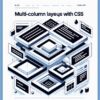Tips for Designing Mobile-First Websites

Designing with a mobile-first approach is essential in today’s digital landscape. As more people use their smartphones as their primary device for accessing the web, creating websites that are visually appealing and functional on smaller screens is paramount. This article delves into the best practices for crafting mobile-first websites, ensuring a seamless user experience across all devices.
Understanding Mobile-First Design
Mobile-first design is a strategy in web development where designing for the smallest screen is prioritized. This approach ensures that your site’s most important features are accessible and intuitive on mobile devices, enhancing user experience and engagement.
The Importance of Responsive Layouts
Responsive layouts are central to mobile-first design. They adapt to the size of the screen on which the website is being viewed, whether it’s a smartphone, tablet, or desktop. This adaptability ensures that your content is always readable and accessible, no matter the device.
Best Practices for Mobile-First Websites
Creating a website with a mobile-first approach involves more than just making it responsive. It’s about rethinking the design process to prioritize mobile constraints and opportunities. Here are some essential tips for designing effective mobile-first websites.
Simplify Navigation
On mobile devices, screen real estate is limited. Simplifying your website’s navigation ensures that users can easily find what they’re looking for. Consider using a hamburger menu to save space and keep your design clean and uncluttered.
Optimize Content for Mobile
Content on mobile needs to be concise yet informative. Break text into smaller paragraphs and use bullet points for easier reading. Optimize images and videos to load quickly without compromising quality, as slow-loading content can frustrate users and lead to higher bounce rates.
Design for Touch
Design interactive elements such as buttons and links to be touch-friendly. Large, easily tappable areas improve usability and reduce the chance of user error, enhancing the overall experience on mobile devices.
Focus on Speed
Page load speed is crucial for mobile users, especially those on slower data connections. Optimize your website’s speed by compressing images, leveraging browser caching, and minifying CSS and JavaScript files. Fast-loading sites retain users better and contribute to higher search engine rankings.
Use Media Queries
Media queries are a cornerstone of responsive design, allowing you to apply different styles based on the device’s characteristics. Use them to adjust layout, font sizes, and other design elements to ensure your site looks great on all screen sizes.
Test on Real Devices
Finally, testing your site on actual devices is critical. Emulators can give you an idea, but real-world testing uncovers usability issues you might not have anticipated. Test on various devices to ensure compatibility and a seamless user experience.
Conclusion
Designing with a mobile-first approach isn’t just about making things fit on a smaller screen. It’s about rethinking how users interact with your website on mobile devices. By focusing on simplicity, speed, and usability, you can create mobile-first websites that offer a fantastic user experience, ensuring your site is accessible and enjoyable for everyone, regardless of the device they use. Engage your audience effectively from the small screen outwards, and foster a positive connection with your digital presence.


